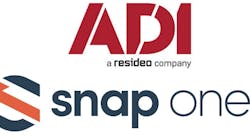Q: How does a multi-door system decide which user is authorized for a particular door?
A: Most manufacturers use "access levels" to allow you to program which users are authorized to open a particular door. Doors or groups of doors are added to a list to make an access level. Each user?s number is then assigned to an access level. In some systems access levels are associated with a time zone, in others the user number is assigned to a time zone and an access level. In some cases the holiday schedule is also assigned to the time zone or access level. The most flexible system will maximize the use of time zones, access levels and holidays by allowing you to assign each user to an access level, time zone and holiday schedule. The drawback is, there are three variables for each user.
Determining who gets where in a multi door system depends on the type of system. In distributed systems, the decision is made at each door controller. The database of time zones, access levels and holidays is stored in the controller. In a centralized system, the database resides at a central controller or computer. In hybrid systems, a database for the most commonly used users resides at the controller and others are stored centrally. Hybrid systems are used when the number of users authorized for an area exceeds the capacity of the controller.
Time Zone Usage
Q: What are time zones and how are they used? What are the tricks to assigning time zones and access levels?
A: Time zones are used to specify the days and times that a user is authorized to enter an area. They?re also used to determine when a door locks and unlocks or when an event will generate an alarm. Determine how the users will be using the system and anticipate what might change. Ask questions to see if there are logical groups of users that can all be treated the same way. Each of these groups can be treated as an access level with the same time zone and holiday schedule.
Impact of Site Codes and Communication
Q: How can site codes impact the system? How can the site code help when communication fails?
A: Some door controllers will accept just a single site code. Others may accept several. Others ignore the site code all together and just focus on the user number. If you install a system that is limited to a single site code and are unable to get additional credentials with that site code at a later date, you will have a problem.
In systems that require communication with a central computer, a site code can be used to validate the user when communication is lost. The centralized system would normally process the unique user number and the site code of the credential to make its decision. When communication is lost, some systems will revert to degraded mode and check only the site code for validation. Depending on your users requirements, this option may be preferable to denying all access when communication is down.
Brad Shipp is a former Executive Director and Training Director for the NBFAA where he authored several NTS courses, including the Access Control Certification course. His involvement in the access control industry dates back to 1974 and in 1986 he became an instructor for the NBFAA National Training School. Shipp has served on several law enforcement, regulatory and industry association boards and has been honored for his service by the False Alarm Reduction Association and the International Association of Security and Investigative Regulators. Send in your questions on access control to [email protected].

